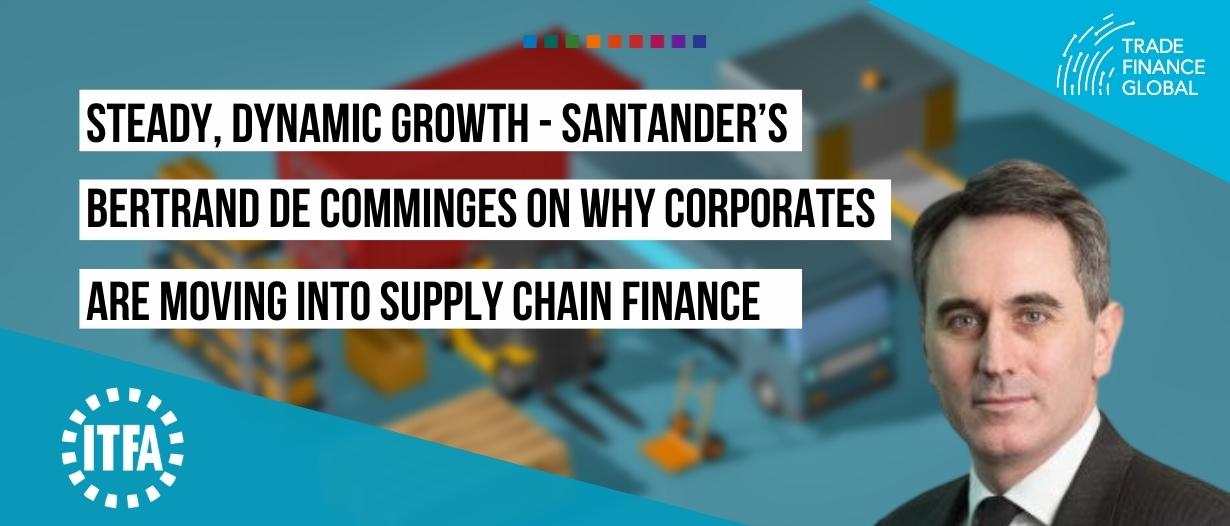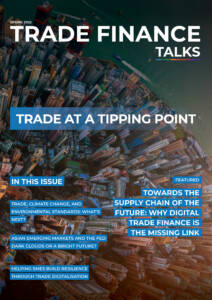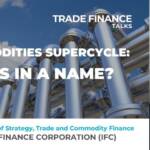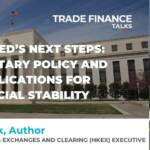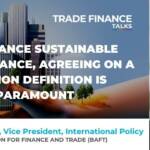After another year of disruption for much of the global economy in 2021, one sector that has emerged mostly unscathed – except for one high-profile collapse – is supply chain finance.
Despite lockdowns and the rapid pace of inflation, supply chain finance was still able to deliver, helping world trade volume to return to pre-pandemic levels as quickly as possible.
Bertrand de Comminges, global head of trade finance investments at Santander Asset Management, has dubbed this an “extraordinary performance” for supply chain finance.
After joining Santander in August 2020, de Comminges spent most of the pandemic at Spain’s largest bank, but he also saw the early stage pandemic at HSBC, where he had served for eight years in a variety of trade finance roles.
Prior to HSBC, de Comminges served for almost three years as the head of the structured trade advisory for Europe, Middle East, and Africa (EMEA) at JP Morgan.
Supply chain finance resilience in 2020-21
Looking back on the past 18 months, de Comminges said that supply chain finance has performed uniquely well amid challenging conditions.
He said that stories of supply chain disruptions, backlogs, and shortages didn’t really map on to his personal experience at Santander, where his illiquid assets team had an exemplary year.
“In our analysis, in our portfolio, we have seen no defaults whatsoever, and this has been the lifeblood of the economy,” he said.
“The economy has kept going, and many mid-size companies have had access to liquidity thanks to these programmes from the big global players – i.e. their buyers.”
In a sign of the overall health of the supply chain finance market, de Comminges said his biggest challenge during the pandemic was meeting increased demand.
“As an investment manager, we have lots of appetite,” he said. “And on many occasions, our major challenge is that our investors want to invest much more than our funds today can allow.”
With Santander’s supply chain finance funds growing “steadily” and “dynamically”, de Comminges said he foresees no lack of interest in this asset class going forward.
Greensill Capital collapse – a lesson in supply chain finance education
In March 2021, following the collapse of Greensill Capital, supply chain finance had its name dragged through the mud in both the business press and in the front-page news.
Much of this tarnishing was a symptom of Greensill’s access to the highest levels of the UK government, thanks to its close relationship with David Cameron, the former Conserative prime minister who became a Greensill adviser in 2018.
Through his lobbying of Cameron during his 2010-16 premiership, Lex Greensill, the owner of Greensill Capital, was able to secure personal access to eleven government agencies, according to The Sunday Times.
When Greensill Capital became insolvent in March 2021, therefore, its association with ‘Conserative Party sleaze’ was bound to drift towards supply chain finance as a whole, whether rightly or wrongly.
“There have been a few hiccups due to some cases – that we all know in the industry – of funds that were wrongly named ‘supply chain finance’,” said de Comminges.
“One might argue that they were probably not supply chain finance at all.”
However, one upside to the Greensill fiasco, as de Comminges sees it, is that it has underscored the value of supply chain finance education, and it has got investors asking questions they might not have asked before.
“They want to know and we are able to provide. It’s very important in our industry to have investment managers that truly understand the asset, who have expertise of many years actually doing this business themselves,” he said.

Appealing to corporates – supply chain finance pull factors
Asked about the appeal of supply chain finance to corporates, de Comminges said he believes it’s a mixture of liquidity and accounting benefits.
“From a corporate perspective, there is a dual use to supply chain finance,” he said.
“One – first and foremost – is providing your suppliers with liquidity, so you’re looking at reducing the days payable, outstanding, and optimising that cash conversion cycle.
“On the other hand, you also see the preferential accounting treatment in terms of the balance sheet.”
Ultimately, as de Comminges explains, there are few reasons why a fast-moving business would want to use its own money to maintain and expand its operations, when it could use a third party’s money at an agreeable price instead.
“At the end of the day, it’s a working capital play – it’s about liquidity,” he said.
“Supply chain finance itself, when you are supporting the strategic suppliers with liquidity, is not that expensive.
“It’s a pretty competitive source of liquidity for your suppliers, and therefore, as a corporate, you can dedicate that money to run your business in more profitable areas.”
Supply chain finance – expanding frontiers
Having made his first supply chain finance deal in his native Spain in the 1990s, de Comminges said he has seen the industry grow with little interruption during the past 20-30 years.
“What can I say? The programme is still there, it keeps growing, it keeps expanding globally,” he said.
De Comminges believes that the three factors that will influence the future growth of supply chain finance are jurisdiction, technology, and access for small and medium-sized enterprises (SMEs).
“It’s a question of jurisdiction, it’s a question of new technologies making life easier,” he said.
“Fraud risk is very well contained in supply chain finance, so the question will be how to make it more accessible to smaller players because, of course, there are economies of scale, and there are overheads to implementing supply chains.
“So, if we really want to go into smaller companies – good, profitable, smaller companies – technology will definitely play a role in that.”















